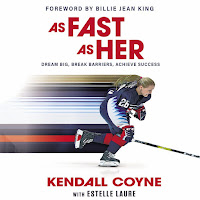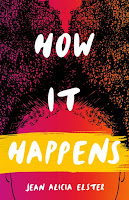Welcome to SCBWI-MI's Book Birthday Blog!
Where we celebrate new books from Michigan's authors and illustrators.
Congratulations to Lindsay Gizicki on the release of To the Moon and Back
How did you come up with the idea for your book?
My family and I were eating breakfast one day and we were discussing how mischievous my son can be. My daughter made a comment about him ending up on the moon one day because he’s so naughty. I told her that even if he did, I would go get him and bring him right back home. My husband replied that it sounded like a cute book idea—and I agreed!
What is something you hope your readers will take away from your book?
The book revolves around a mother’s love. I hope readers can relate to the power of that love—whether it be with their children or the love they felt from their own mothers. It would be an honor if readers were using my own words to express the magnitude of their love for their children. I hope this book helps families connect during bed or reading time.
What inspires you to write?
My children! One of the most beautiful parts about having children has been watching their little imaginations at work. It’s amazing to me how creative they can be at such a young age. One of the things I started doing with my daughter was to have her tell me a bedtime story every night. Her stories inspire stories of my own. I like to think this book, and every book I write, will have pieces of my children in them. My life these days revolves around my children so it felt very natural to enter the world of children’s books.
You are the Michigan-representative for The Book Fairies Worldwide. How did you find this organization and what is it about?
I stumbled upon The Book Fairies one day while reading an article about Emma Watson. She had just helped The Book Fairies launch in London during Women’s International Month in 2017. I visited London the following July and was disappointed when I couldn’t find one of their hidden books. When I got back to the States, I emailed their CEO to see if I could help with Michigan efforts. She informed me that they didn’t have anyone stationed in Michigan yet and asked if I would like to be the official rep. The Book Fairies are an organization dedicated to promoting reading. We hide free books for readers—brand new or used. We work with many publishers, authors, and bookstores to promote new and upcoming books. We’ve done campaigns with movie production companies as well to celebrate upcoming movies adapted from best-selling novels. Think of it as a revolving Little Free Library, but you can find a book anywhere!
What are your marketing plans for the book?
I’ve been trying to come up with ways to connect with parents and teachers. Members of my mailing list receive free activities every month sent right to their inboxes. These activities promote various motor skills for children ages 2-6. I’ve been trying to grow my subscribers through this. I’ve also been sharing free coloring pages and doing giveaways on our social media. I’ve looked for out-of-the-box ways to get To the Moon and Back to potential readers. I have various collaborations in the works. For example, I have the book lined up to be included in a subscription box service. It’s also going to be sold along with Play-Doh sensory kits (which are space-themed). I have several author events planned at bakeries and craft stores, all while featuring goodies that match characters from the book. I found that reaching out to small businesses has been very successful. If you can sell your product along with someone else’s product you’re both profiting and reaching new customers.
A little bit about the book . . .
Join a mother and her child on an epic adventure through space. Our mischievous child keeps finding themself in space through many wrong doings—their balloon carried them too high, their homemade rocket went too far. Their mother, desperate to bring them home, chases after them by her own silly means. Witness the depth of a mother's love and just how far that love can take you—if you just believe.
A little bit about the author . . .
Lindsay Gizicki graduated from Central Michigan University and pursued her passion for journalism. She is currently the editor of an architecture magazine based in Troy, Michigan. Lindsay is an avid book lover and the Michigan-representative for The Book Fairies Worldwide, leaving hidden books for potential readers all around the state. In her spare time, she can be found on Lake St. Clair with her husband, Cyle, and their 4-year-old daughter, Harper, and 2-year-old son, Henry.
Facebook: https://www.facebook.com/hankarooreadings
Instagram: https://www.instagram.com/hankarooreadings/ &
https://www.instagram.com/elle_gizicki/
LinkedIn: https://www.linkedin.com/company/hank-a-roo-readings/



























